If you want to discover the secrets of Spanish food, you're in the right place. Here we'll dive into the history, culture, ingredients, and dishes that make Spanish cuisine so special. Hope you're hungry!
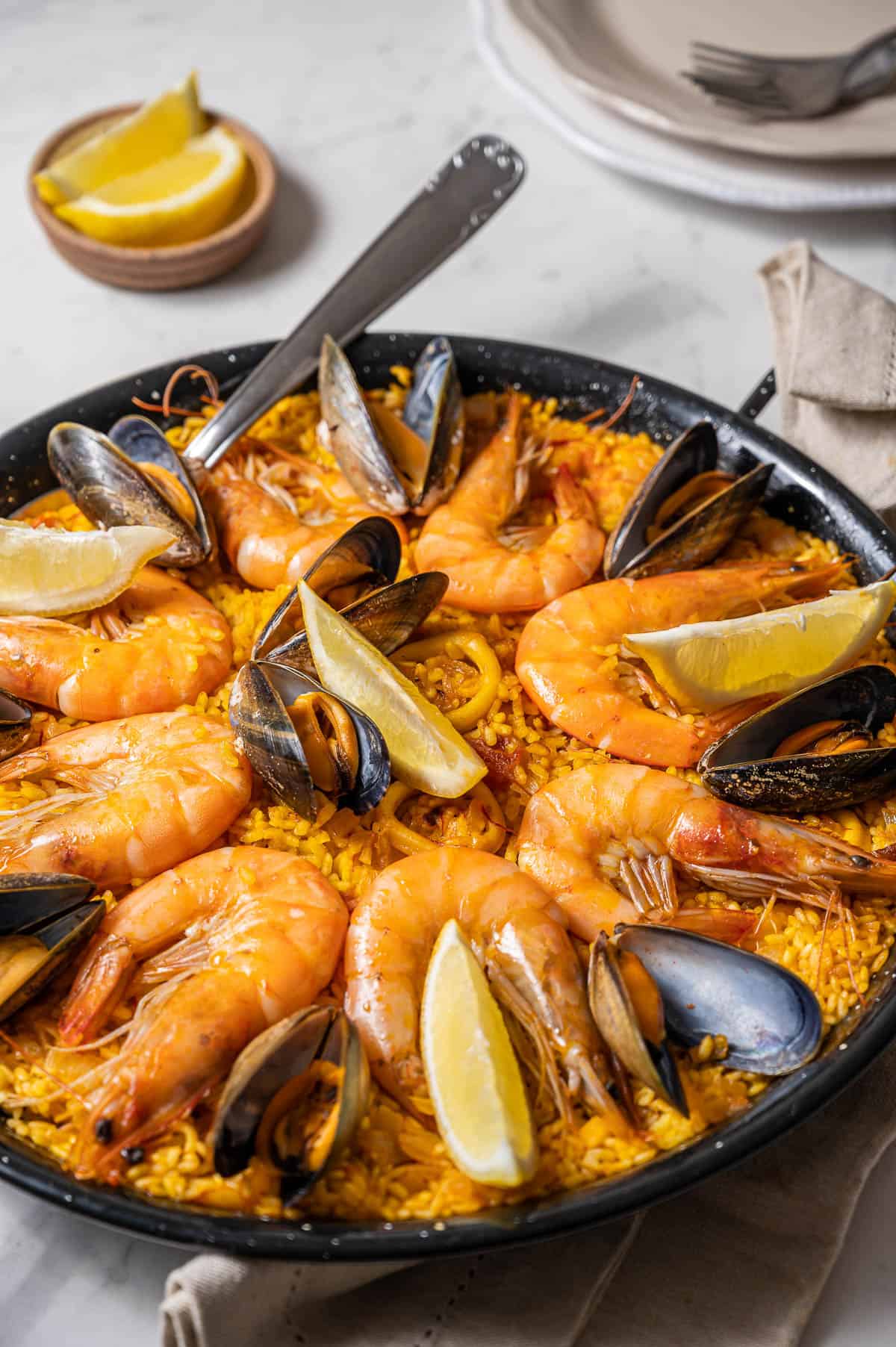
Anyone who's visited or lived here knows that it's hard not to fall in love with Spain—and that's largely thanks to its cuisine. Food in Spain is so much more than tapas and paella. Although this country is relatively small, it contains an incredible variety of cultural and culinary traditions.
In this post, we'll cover the essentials of Spanish food: where it comes from, what it's made of, how to enjoy it, and much more. To go deeper into any of the topics below, click the links provided—they'll lead you to dozens of posts, recipes, and stories about our favorite Spanish dishes and traditions.
A Brief History of Spanish Food
Spanish food is, in many ways, a combination of several different cultural legacies. First of all, there's the fact that Spain itself was formed from the union of several regions with their own languages, traditions, and cuisines.
In addition, the Iberian Peninsula was occupied by various groups of people over the centuries. From the Romans to the Visigoths to the Moors, each of these groups left its mark on Spanish food. The coexistence of Christian, Jewish, and Muslim cultures has also had a strong influence throughout Spanish history, including in the kitchen.

Finally, Spain played a central role in the transatlantic trade of goods following the "discovery" of the Americas. It was the gateway to the New World, which meant that many new ingredients and cooking practices passed through Spain before reaching the rest of Europe.
All of these factors and more have intersected to give Spain a diverse, complex, and totally unique culinary identity. Today it may be most famous for molecular gastronomy and the the global tapas trend, but Spanish food is way more complex and diverse than many people give it credit for.
Spanish Regional Cuisine
Spain is made up of 17 autonomous communities, each of which has its own distinct identity. Everywhere you go, you'll find different local customs, languages, and foods. Here's a brief overview of what you can expect to discover—and taste—in each region (listed alphabetically).
Andalusian Food
Andalusia is the southernmost region of Spain, encompassing famous cities like Granada, Seville, Malaga, and Cadiz. Andalusian cuisine leans heavily on seafood (often fried) and shows clear influences from both Muslim and Jewish cultures. Legendary dishes like gazpacho, mojama, rabo de toro, and torrijas all hail from here—not to mention the famous sherry wines.
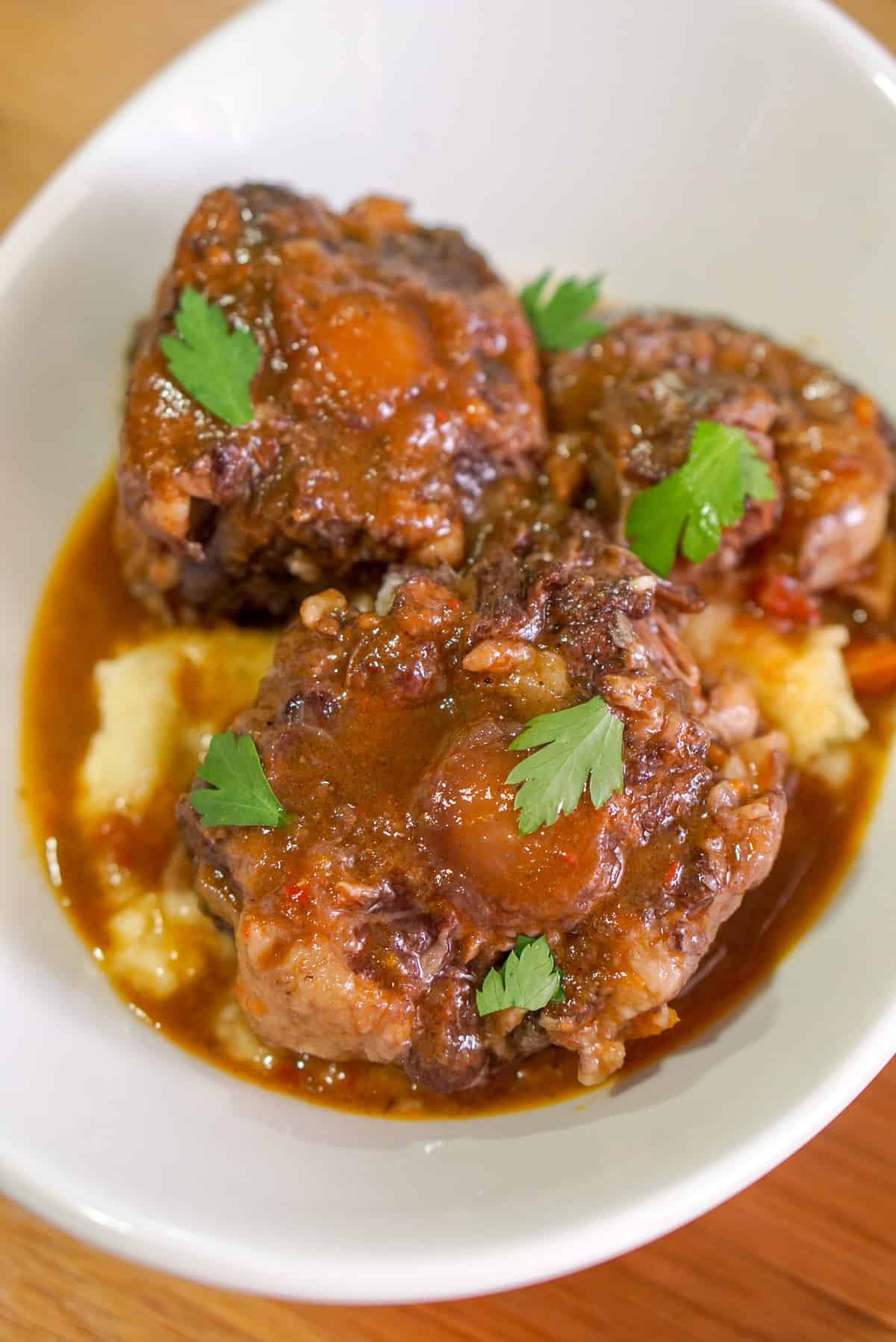
Aragonese Food
Aragon is one of Spain's lesser-known regions, but its natural beauty, incredible architecture, and distinctive cuisine make it well worth a visit. Explore Zaragoza or smaller towns like Teruel and Huesca, where you can sample local specialties like longaniza, ternasco asado, and trout from the Ebro River. Read our guide on what to eat in Aragon for more tips.
Asturian Food
Asturias is known for awe-inspiring mountains, charming fishing towns, and an abundance of cows—which means a lot of locally produced Spanish cheese. The food in this northwestern region is often rich and hearty, perfect to pair with a crisp Asturian cider. Iconic dishes include fabada, cachopo, and caramelized arroz con leche, plus plenty of other Asturian specialties.
Balearic Islands Food
The Balearic Islands—which include Ibiza, Mallorca, Menorca, and Formentera, among others—are in the Mediterranean Sea off Spain's eastern coast. They're known for gorgeous beaches and culinary specialties like sobrassada, ensaimadas, and all kinds of fresh seafood. Check out our list of the best bites in Mallorca for more recommendations.
Basque Food
The Basque Country is well known for its award-winning chefs and restaurants. Its language is unrelated to any other in the world, and its food is almost as unique. From pintxos to cider houses, Basque cuisine is a universe in and of itself—one that you'll never get tired of exploring. Our advice? Hit up San Sebastian, but don't let the adventure stop there.
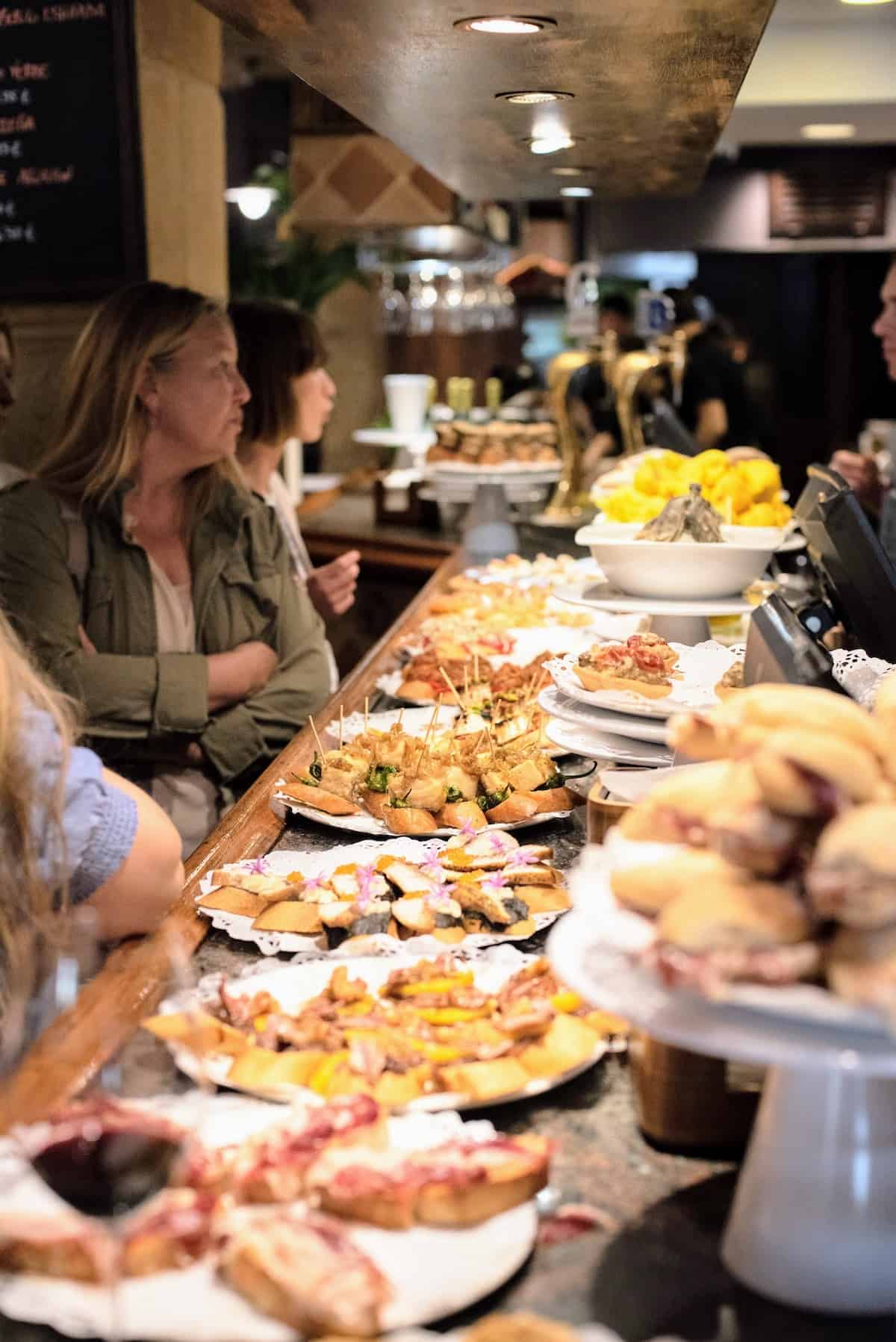
Canary Islands Food
The Canary Islands are a volcanic archipelago in the Atlantic Ocean, actually closer to Morocco than Spain. The seven islands have a culture all their own, which extends to food. If you've never tried papas arrugadas, mojo picón and mojo verde, gofio, or escaldón, you're in for a treat. Find out more about the typical foods of Fuerteventura, wine in Lanzarote, and the best bites in Tenerife.
Cantabrian Food
Cantabria is in the middle of Spain's northern coast, bordering the Bay of Biscay. It's no wonder, then, that seafood plays a starring role. Some of the most typical Cantabrian dishes are based on locally caught albacore tuna, hake, and other types of fish, though beef is also popular. But nothing beats the anchovies from Santoña, one of the best villages in Spain for foodies.
Castilla–La Mancha Food
Southeast of Madrid lies the legendary setting of Don Quixote: Castilla–La Mancha (aka Castile–La Mancha). It's full of mountains, vineyards, and windmills, plus some of the most famous food in Spain. Toledo is renowned for game meats and marzipan sweets, and of course, the whole region is well known for Manchego cheese.
Castilla y Leon Food
Castilla y Leon (or Castile and Leon) is a large region northwest of Madrid, encompassing several cities with their own culinary claims to fame. Segovia is legendary for its cochinillo (roast suckling pig), Salamanca is home to the exquisite farinato (spiced sausage made with flour), and Leon is famous for cecina (cured beef)—but small villages like Pozos are equally worth visiting.
Catalan Food
The northeast corner of Spain is home to another distinctive culture, language, and cuisine. Catalonia includes Barcelona, but it's far more than just a tourist hotspot. The pride that people here feel for their history also extends to Catalan food; one bite and it's not hard to see why. Typical dishes include calçots, canelons, fideuà, fricandó, crema catalana... we could honestly go on forever.
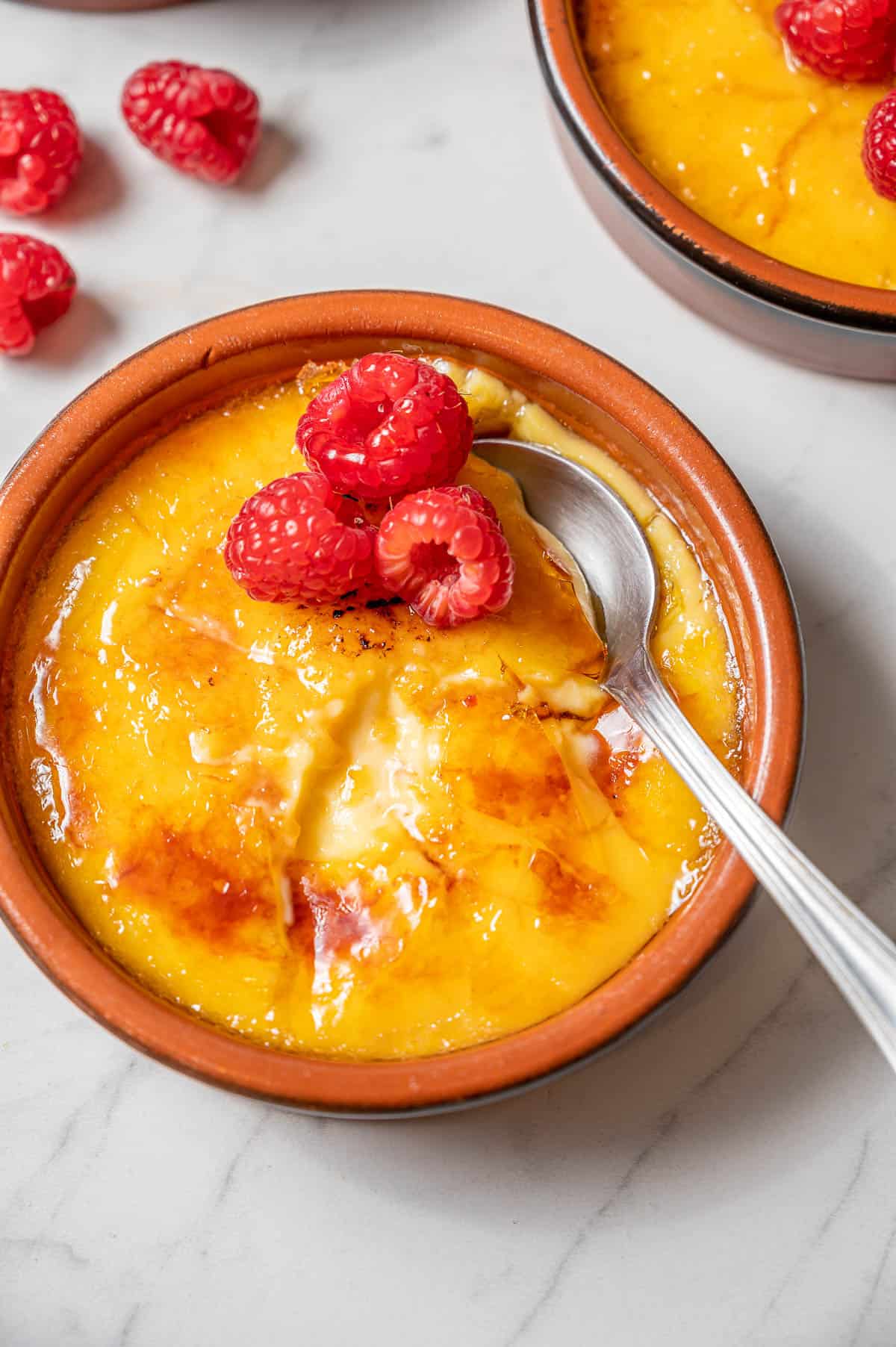
Extremadura Food
Located on the border with Portugal, Extremadura is a land of forests, lakes, natural beauty, and... blood sausage. That's right: one of the best things to eat in Extremadura is morcilla. Here they mix it with pork fat and potatoes or pumpkin, making the taste a bit milder. Other regional specialties include migas and the world-famous pimentón de la Vera (paprika): an essential ingredient for lots of popular food in Spain.
Galician Food
You might not be familiar with this northwestern region, but many of the most popular Spanish dishes hail from here. Ever tried an empanada gallega or boiled octopus drizzled in olive oil and paprika? These are two of the most typical foods in Galicia, along with pimientos de Padrón, Tetilla cheese, chuletón, and the delicious almond cake known as tarta de Santiago.
La Rioja Food
When most people hear "Rioja," they think of wine—and for good reason. This northern territory is home to one of Spain's most famous wine-growing regions. But of course, all that wine has to be paired with something. A hearty local meal—often featuring lamb chops, beans, artichokes, and piquillo peppers—is an essential component of any trip to La Rioja.
Madrid Food
Madrid's dining scene is just as diverse as that of any other major metropolis; you can find cuisine from any corner of the world here. But the capital (and the region surrounding it) also has its own specialties, from cocido madrileño and callos to calamari sandwiches and classic tortilla. Figuring out what to order and where to eat in Madrid is no easy task!
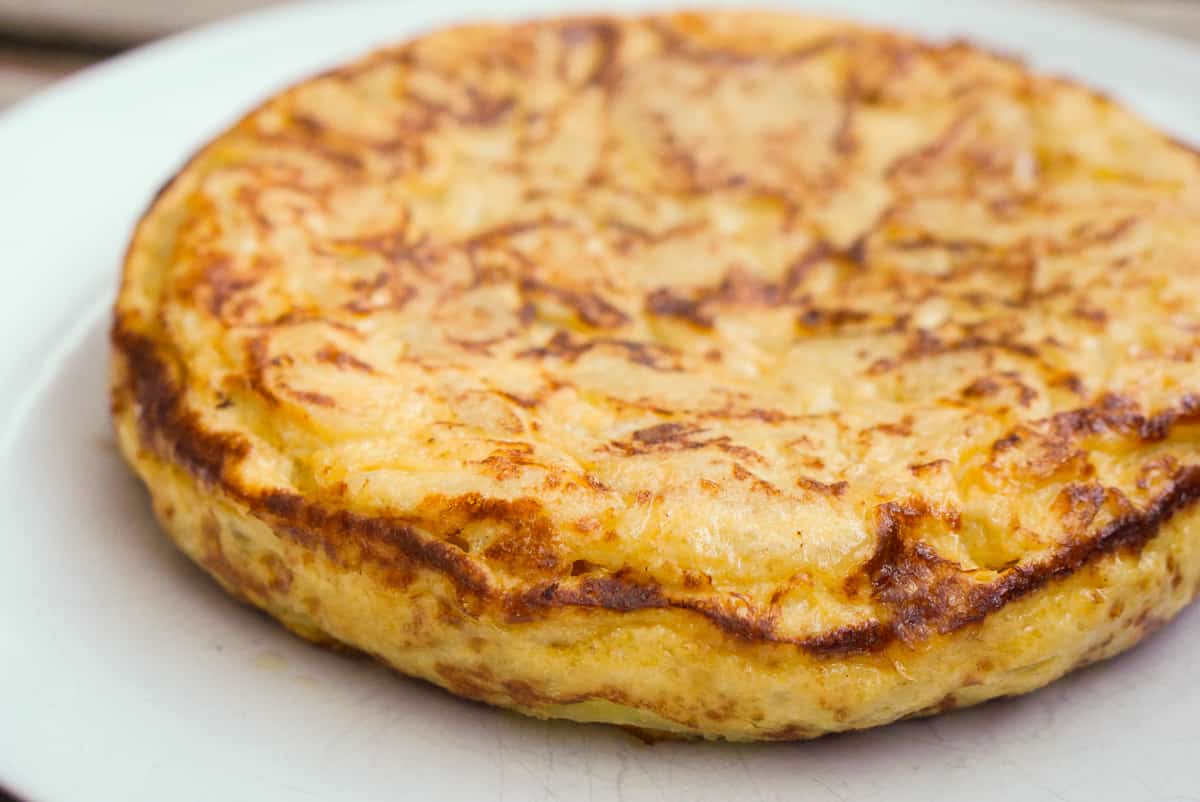
Murcia Food
Murcia is one of the smaller Spanish regions, nestled on the southeast coast between Valencia and Andalusia. But this unassuming destination has a lot to offer in terms of cuisine. There's an abundance of local produce, fresh seafood, and incredible rice dishes—not to mention the famous ñora peppers, which are ground into a spice that typifies the flavors of Murcia.
Navarra—or Navarre in English—is most famous for its capital city of Pamplona, where the annual running of the bulls takes place. But it's also full of charming villages and ancient history, plus a few can't-miss local treats. If you're wondering what to do in Navarra, we recommend a tasting tour of talos con chistorra, locally made cider and honey, and Idiazabal cheese.
Valencian Food
If there's one food that defines this region, it's paella. Valencia is the true birthplace of this iconic dish, which is traditionally made with chicken, beans, and vegetables. But there's plenty more Valencian food to discover, from fartons and horchata to mussels and esgarraet. If you like mimosas, try agua de Valencia: a cocktail of local orange juice, cava, vodka, and gin.
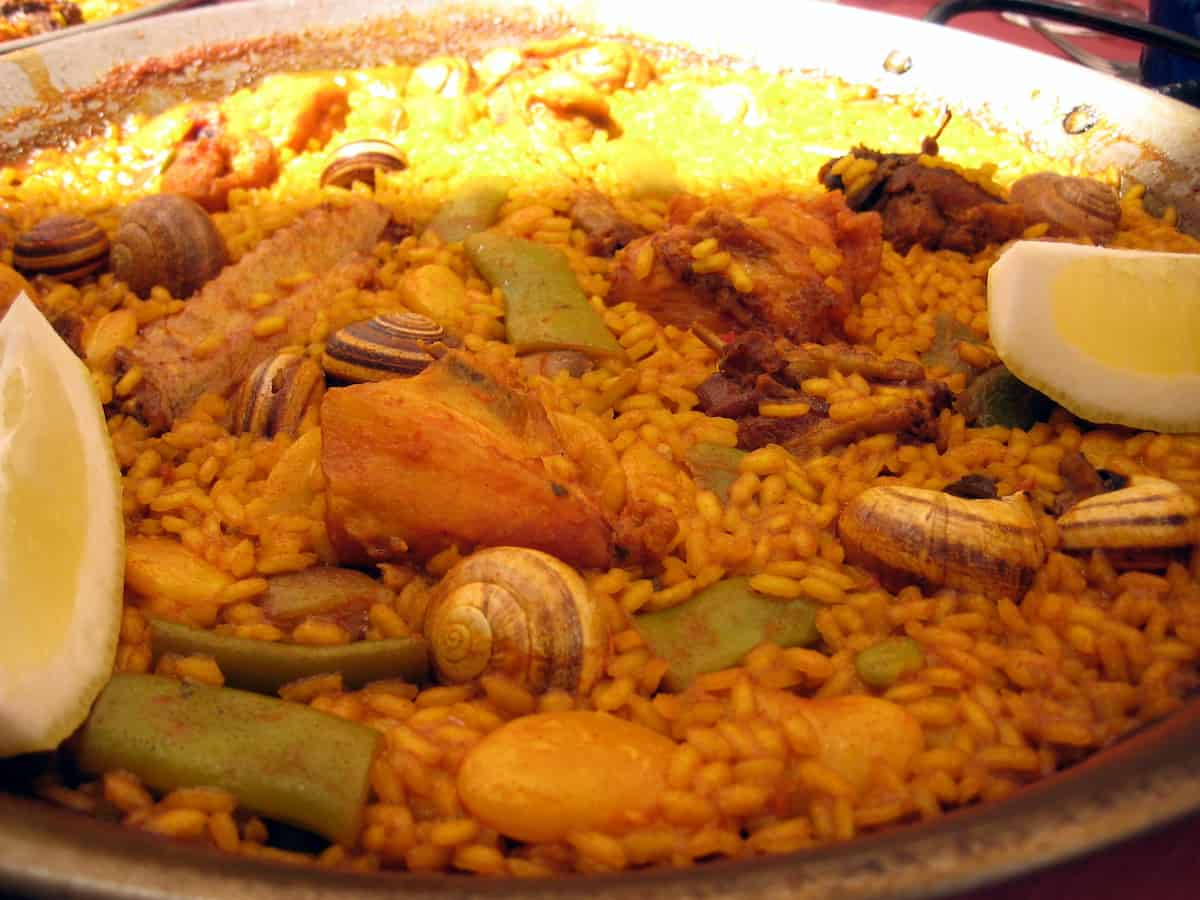
Spanish Food Culture
There are certain things that everyone associates with typical food in Spain: tapas, for example, or late-night dinners. But do you know what these elements actually mean, or where they came from? The more you learn about what, where, when, how, and why Spaniards eat the way they do, the more you'll be able to enjoy authentic Spanish food culture.
Tapas
You've probably heard of these famous and much-imitated small plates. But what are tapas, exactly? The answer isn't so simple, but one thing's for sure: Spain wouldn't be Spain without them. And here's a tip: although many classic tapas recipes feature meat and fish, there are also plenty of vegetarian tapas for all tastes.
Breakfast in Spain
Spanish breakfast is usually a small meal, often pairing an espresso or café con leche with a pastry or simple toast with tomato or butter and jam. If you're a bit hungrier, you can also opt for a slice of Spanish tortilla or a savory sandwich. Or indulge in churros con chocolate: one of our all-time favorite Spanish breakfast foods.
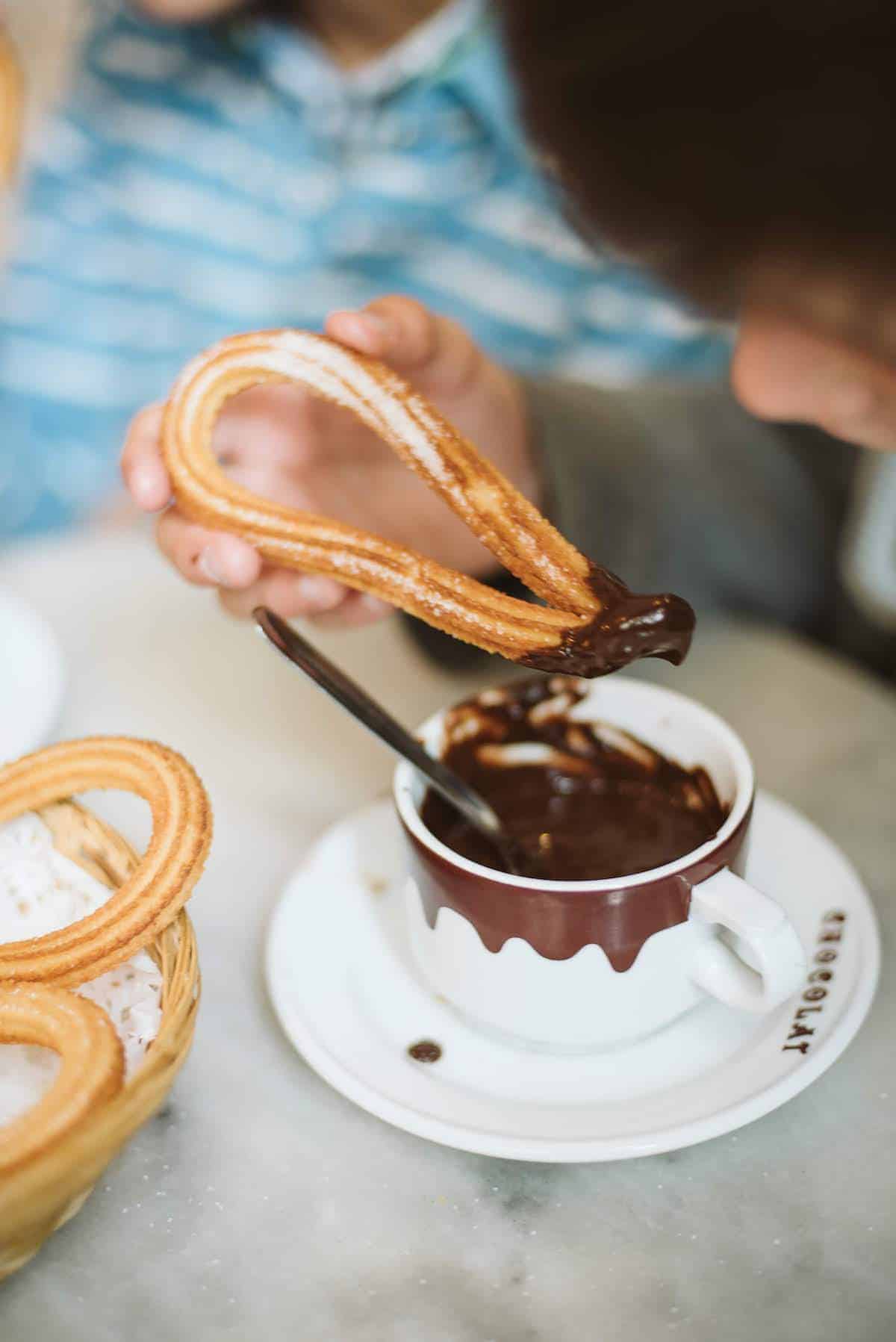
Types of Eating Establishments
There are many different types of Spanish eating establishments, and each one serves a specific purpose (or several). For example, it might surprise you to learn that a bar is a great place to grab breakfast, or that a restaurante is usually reserved for formal occasions. To find out where people eat and drink in Spain, check out our Spanish dining guide.
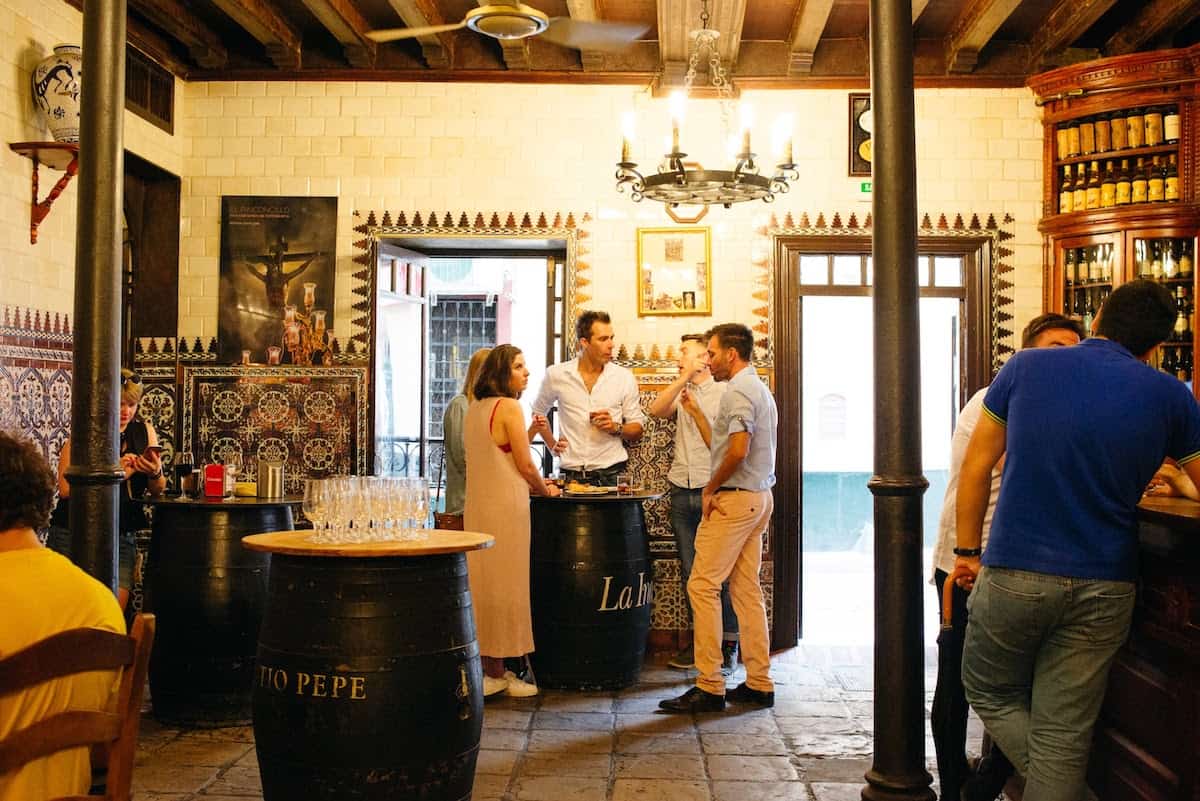
Spanish Mealtimes
Some visitors find it hard to adjust to Spanish mealtimes—but if you know what to expect, you might find that you actually prefer Spain's eating schedule!
The first meal of the day is a light breakfast, often followed by a mid-morning snack. Lunch is the largest meal, served around 2 or 3 p.m. Most people enjoy an afternoon merienda to keep their appetite at bay until dinner, which is usually a smaller meal eaten at 9 or 10 p.m.
Tip: One secret is to eating in Spain is to have small meals and snacks throughout the day, so that you don't get too hungry between mealtimes.
Etiquette
Once you know where and when to eat, the next question is how. Spanish eating establishments have their own set of customs and unwritten rules, which can be hard to decipher on your own. Read our guide to Spanish restaurant etiquette to make sure you have the best experience possible.
Holiday Food
Did you know there are nine national holidays in Spain? When combined with regional and local celebrations, most Spaniards enjoy around 14 official holidays each year. We all know that the best part of any party is the refreshments—and that's especially true when it comes to Spanish holiday foods.
Spanish Christmas Food
Christmas is one of the most important holidays in Spain, with its own set of delicious traditional dishes. Try some of these Spanish Christmas recipes for a classic holiday feast, from boiled shrimp and cured ham to polvorones and turrón (two of our favorite Spanish Christmas desserts).
Tip: Spain celebrates another important holiday 12 days after Christmas, on January 6th: Three Kings' Day. The best way to celebrate? With a cream-filled roscón de reyes, of course.

Spanish Easter Food
Easter is a huge event in Spain, featuring elaborate celebrations that last a whole week, known as Semana Santa. It's especially spectacular in Andalusia, where the streets fill with revelers and religious processions. As far as food goes, torrijas are a must, along with many other traditional Spanish Easter recipes.
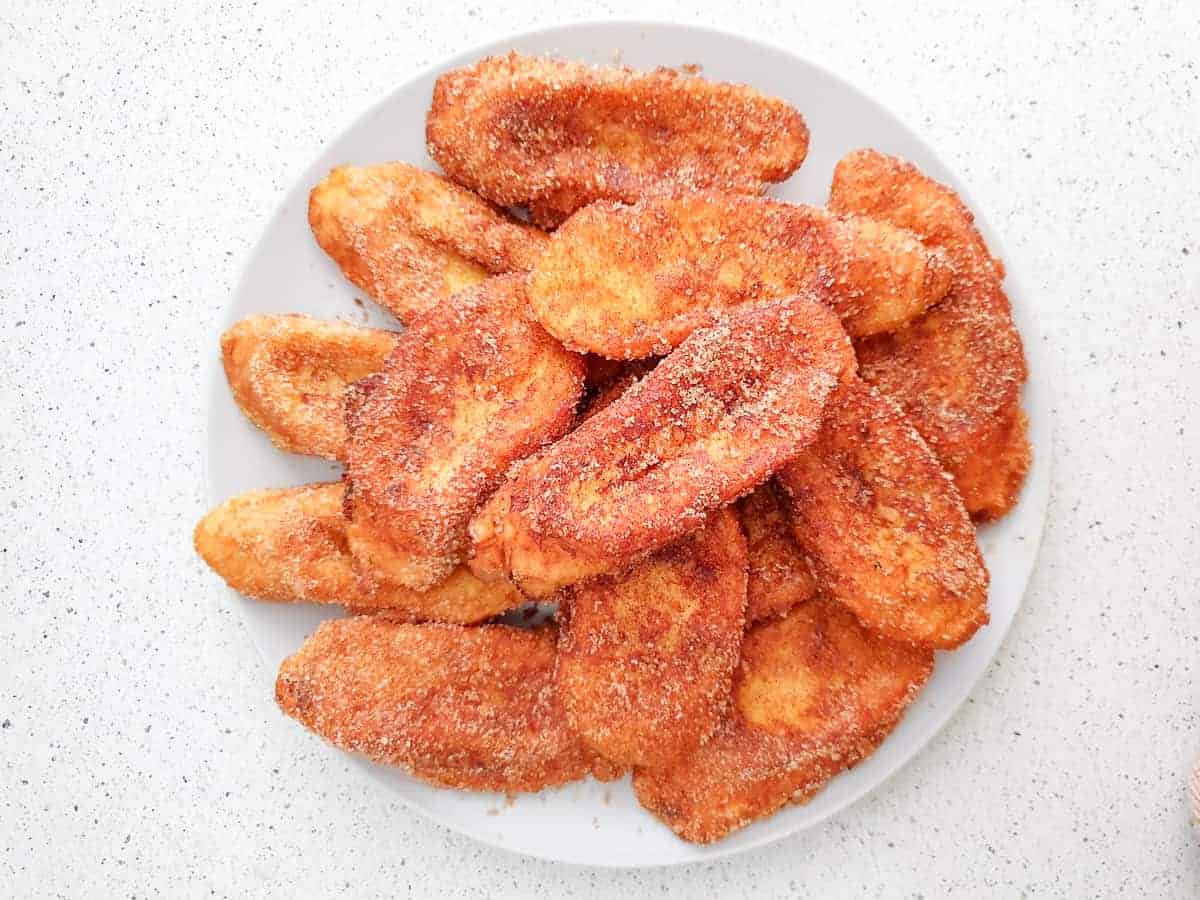
Key Products & Ingredients
One of the best things about Spanish cuisine is that it's often deceptively simple. It relies on a small set of essential ingredients, carefully paired and prepared to perfection. These not-so-secret weapons of Spanish cooking should be of the highest quality possible—which is easy to achieve in Spain!
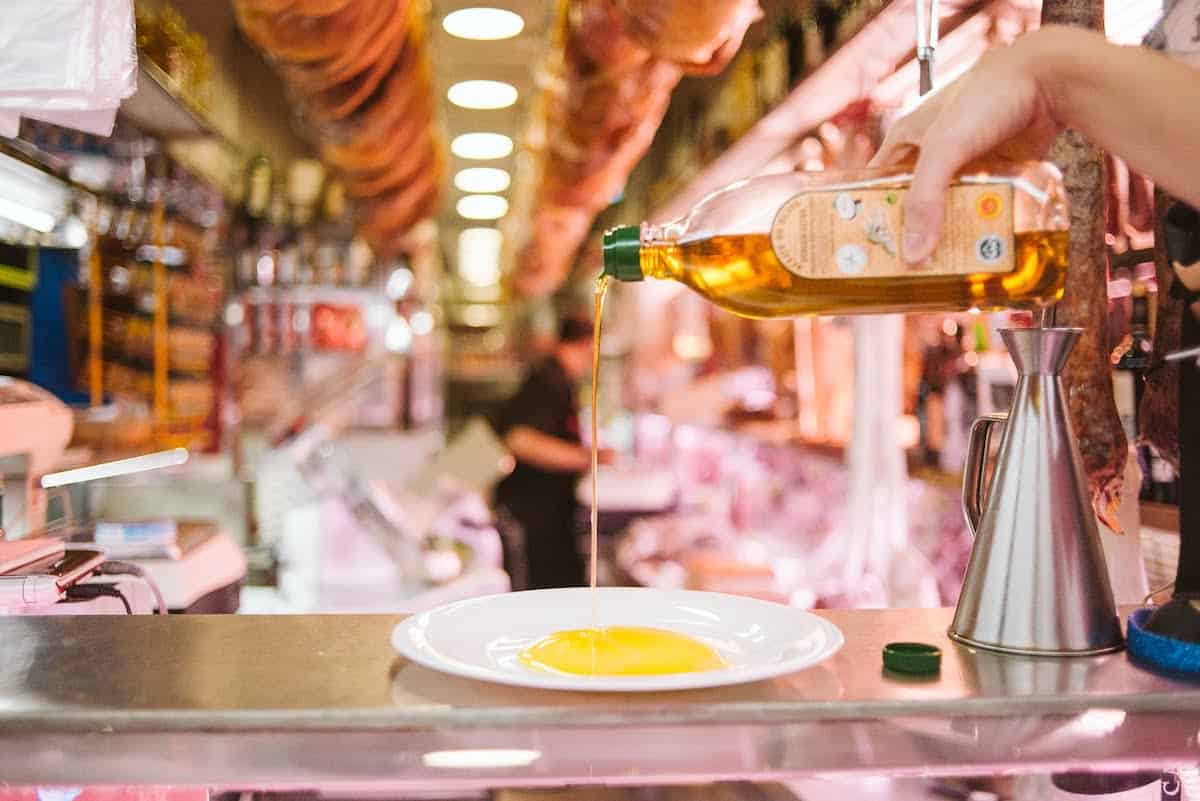
Tip: Sign up for my weekly newsletter to get a free copy of The Spanish Cooking Essentials, a checklist of must-have Spanish ingredients to keep close at hand.
Typical Spanish Foods & Drinks
- Spanish Rice – You've probably heard of paella; it's arguably the most famous food in Spain. But there are also dozens of other delicious Spanish rice dishes, featuring everything from chicken to squid ink.
- Ham & Cured Meats – Iberian cured ham might just be the defining element of Spanish food, uniting the cuisines of all corners of the country. Beyond jamón, there are all kinds of embutidos (Spanish cured meats) to try: chorizo, salchichón, lomo, morcilla, and many, many more.
- Olive Oil – Spanish olive oil suffuses almost every single dish you'll eat here—even desserts. Spain is the world's leading producer of olive oil, and there are literally dozens of different varieties to discover.
- Cheese – From Manchego to Mahón, Spain is chock-full of cheesy delights. Whether it's fresh, semi-cured, or aged, Spanish cheese never disappoints—and always pairs well with wine, jamón... or more cheese.
- Canned Foods – Conservas are a symbol of Spanish identity that's just as surprising as it is delicious. Spanish canned foods can be pretty much anything, from tuna to mussels to white asparagus. Despite what you might expect, these shelf-stable specialties are genuine delicacies.
- Olives – There are hundreds of different types of Spanish olives, and you'll find them everywhere: in the little dish served beside your beer, mixed into salads, skewered alongside peppers and anchovies... the possibilities are endless.
- Chocolate – Spain might not be the first place that comes to mind when you think of chocolate. But Spaniards were the first Europeans to start consuming cocoa beans from the Americas—and the first to add sugar! Today, one of the best ways to enjoy chocolate in Spain is with churros.
- Paprika – Spanish paprika, or pimentón, is a key ingredient in many iconic dishes. This smoky red spice is made from dried peppers, and can be sweet (pimentón dulce), bittersweet (pimentón agridulce), or slightly spicy (pimentón picante).
- Eggs – To Spaniards, eggs are much more than a breakfast food or baking ingredient. They take center stage in Spanish egg dishes like tortilla, huevos rotos, and revueltos—all of which are most commonly served in the afternoon or evening. They're also a common topping for many other dishes, whether hard-boiled or fried.
- Seafood – Spain is surrounded by saltwater, so it's no wonder that seafood is integral to its cuisine. Here you'll encounter not only familiar fish and shellfish, but also surprising specialties like percebes and ortiguillas. To find the best seafood in Spain, head to small towns by the ocean—or to Madrid, home to Europe's largest fish market!
- Beverages – You've probably heard of Spanish wine, but have you sampled its other signature drinks? Start with beer—the country's most popular beverage—but don't miss out on vermouth, cava, tinto de verano, and more. All of them pair perfectly with typical food in Spain, although some combinations are more common than others.
Most Famous Spanish Dishes
When most people think of Spanish cuisine, a few specific things come to mind: paella, sangria, maybe even gazpacho. But in reality, there are dozens of dishes that distinguish this country's cuisine. And, of course, the most famous food in Spain necessarily the best. Whenever someone asks what the must-try foods in Spain are, we find ourselves tongue-tied—where to begin?
That said, we've done our best to pick and choose some of the most essential Spanish recipes, from breakfast to tapas to classic Spanish desserts. These 16 dishes are a good place to start (and once you start exploring Spain's cuisine, you'll never want to stop).
Spanish Breakfast Recipes
- Churros – Deep-fried dough, often served with thick hot chocolate
- Pan con tomate – Bread with tomato, olive oil, and salt (cured ham is optional, but recommended)
- Tortilla de patatas – Spanish omelette with potatoes and onions, acceptable to eat at any time of day
- Café con leche – Classic Spanish coffee, made with equal parts espresso and milk
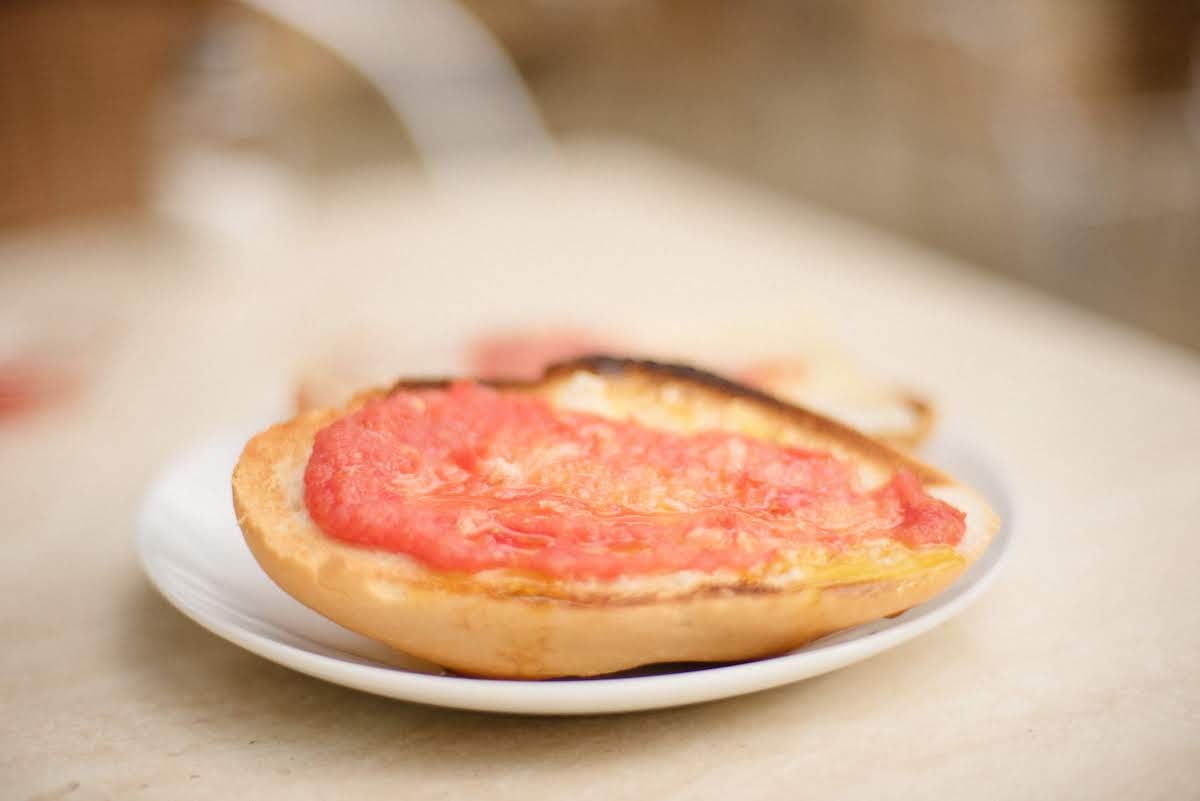
Common Spanish Tapas
- Patatas bravas – Fried potatoes with a slightly spicy sauce
- Pimientos de Padrón – Small green peppers fried in olive oil
- Gambas al ajillo – Shrimp with garlic and olive oil
- Huevos rotos – Runny fried eggs on a bed of potatoes, ham, chorizo, and peppers

Spanish Lunch & Dinner Dishes
- Salmorejo – Cold tomato soup made with bread and lots of garlic
- Rabo de toro – Tender bull tail or oxtail stewed in red wine and spices
- Seafood paella – The most famous type of paella, although it's not the original version
- Roasted fish – Gilt-head bream, sea bass or other white fish baked in the oven
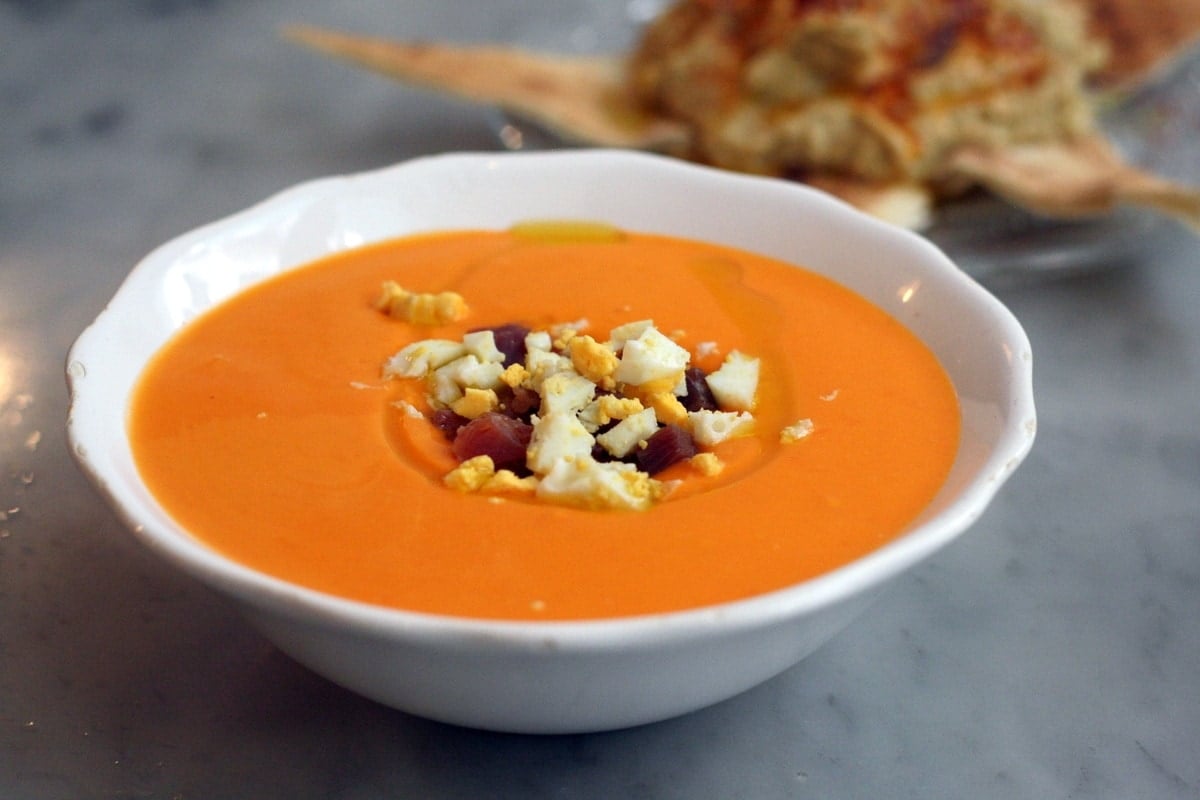
Classic Spanish Desserts
- Arroz con leche – Sweet rice pudding with milk and cinnamon
- Crema Catalana – Rich custard with a caramelized sugar crust
- Torrijas – A cross between French toast and bread pudding, commonly eaten at Easter
- Burnt Basque cheesecake – The legendary crustless and creamy cheesecake from Basque Country
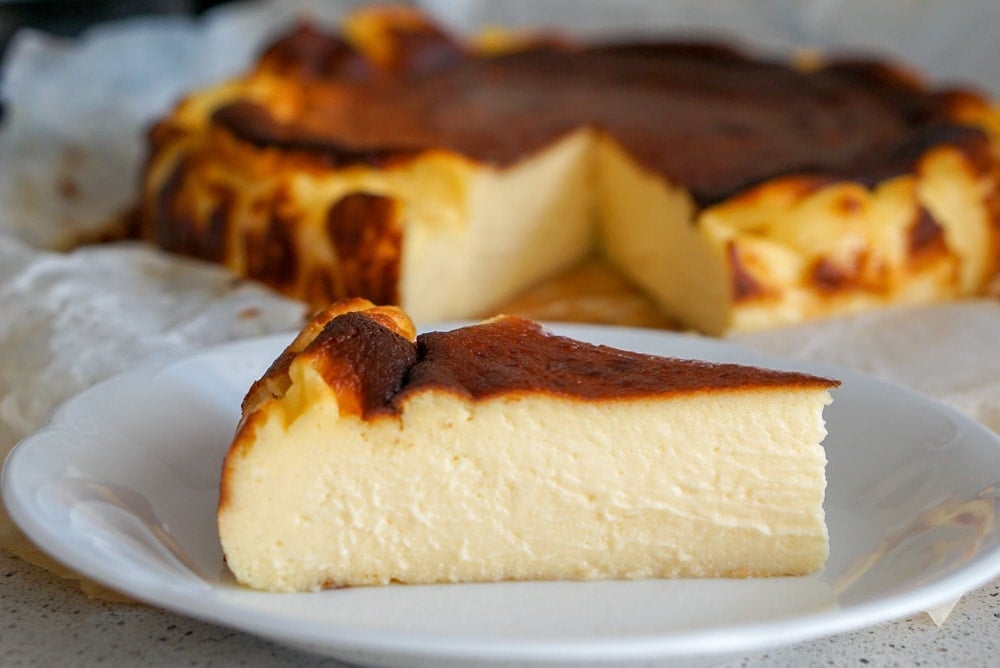
Useful Spanish Food Vocabulary
While it's certainly not required, knowledge of the local language is a valuable asset on any trip to Spain. And this is especially true when it comes to food. Basic communication skills in Spanish will make every meal more enjoyable, whether you're ordering at a café or browsing a local food market.
For a crash course, read our guide to Spanish food vocabulary. You'll learn how to understand a menu, order a drink, ask for the check, and even specify how you'd like your steak cooked!
Tip: When in doubt, remember that a simple por favor or gracias can go a long way—and people will appreciate the effort, even if you make a mistake.
The Best Spanish Cookbooks
These days it's easy to find any recipe imaginable online, but there's still something special about diving into a good old fashioned cookbook. Luckily, there are dozens of incredible Spanish cookbooks out there to devour. From Basque and Andalusian specialties to entire volumes on cod and cured meats, you'll never run out of reading material.
If you prefer your recipes in ebook form, check out the digital cookbooks by the Devour Tours team: Recipes From the Devour Tours KitchenSpanish Feasts From the Devour Tours Kitchen
Spanish Food FAQ
That's up for debate! Some people say paella is the national dish, while others point to the ubiquitous tortilla or jamón. The main thing that distinguishes Spanish cuisine is its diversity; typical dishes vary greatly from region to region. But what they all have in common is a focus on fresh, local, and seasonal ingredients, prepared in simple ways that let their natural flavors shine.
Several common ingredients form the backbone of Spanish cuisine: tomatoes, potatoes, olives, saffron, paprika, olive oil, tuna, cod, and cured ham, just to name a few. Popular foods in Spain include tortilla de patatas, croquetas, patatas bravas, gazpacho, various rice dishes, fried or roasted fish, slow-cooked pork and beef, and hearty stews with beans and meat.
Almost never! You might expect Spanish food to be spicy because of the cuisines of some other Spanish-speaking countries. But typical food in Spain is hardly ever spicy—although it does feature lots of intense flavors thanks to strong seasonings like garlic, onion, paprika, and saffron.
The reason why dinner in Spain is served around 9 to 11 p.m. is not only cultural, but political. In 1940, Spanish dictator Francisco Franco changed the time zone to match that of Germany, pushing everything forward by one hour. This meant that mealtimes suddenly became one hour later—and Spain never changed the time zone back to match its geographical location.
The largest meal of the day is usually lunch, called la comida. It often features multiple courses: soup or salad, a main course, dessert, and coffee, for example. Breakfast and dinner tend to be lighter meals, supplemented by small snacks in the morning and afternoon. So make sure you save your appetite for lunchtime!
Many Spaniards eat five meals a day: a small breakfast, a mid-morning snack, a big lunch, merienda in the late afternoon, and a light dinner. Of course this varies from person to person, but in general the Spanish eating schedule tends to include multiple smaller meals rather than three big ones.
Absolutely! Spanish food reflects the principles of the Mediterranean diet, including lots of fresh fruits and vegetables, olive oil, nuts, seafood, and—of course—wine. It's based on simple, seasonal, high-quality, and nutritious ingredients that are often sourced locally.
Yes. The eastern coast of Spain is on the Mediterranean Sea, which means that the cuisines of Catalonia, Valencia, Murcia, the Balearic Islands, and parts of Andalusia are considered Mediterranean. These regions are known for incredible rice dishes, fresh seafood, and local produce. The rest of the country also reflects many aspects of Mediterranean cuisine, such as the prominence of olive oil, bread, and wine.




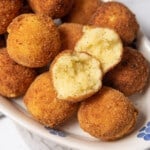

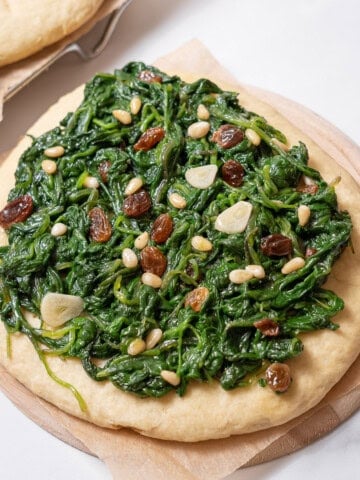
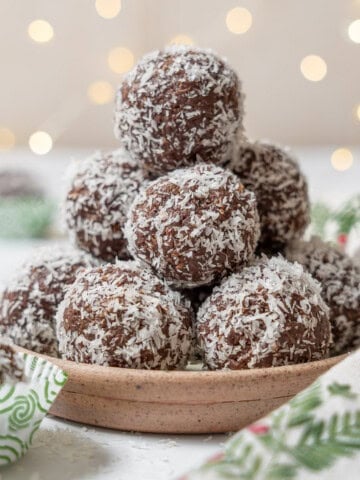
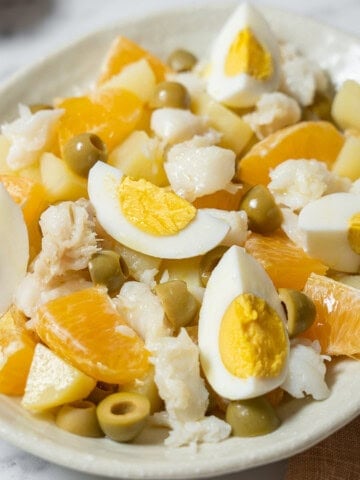
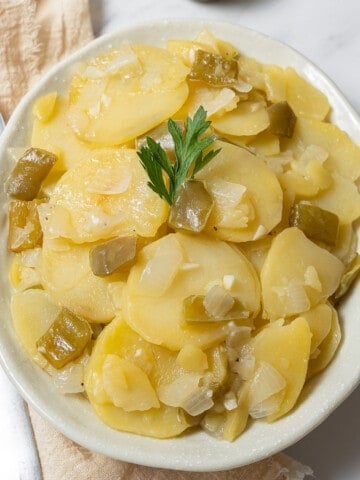
Leave a Reply